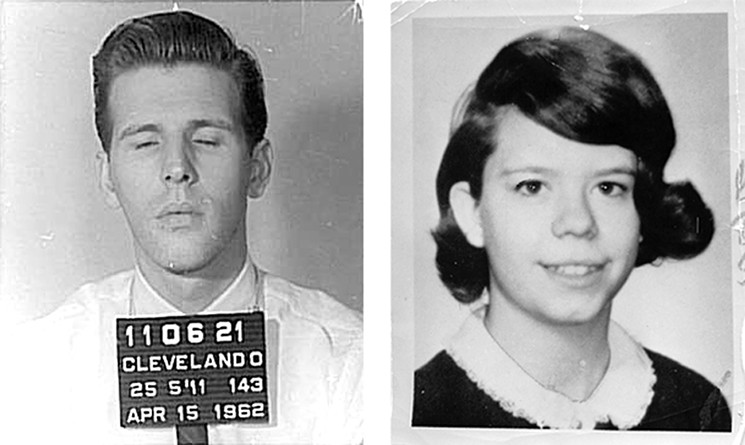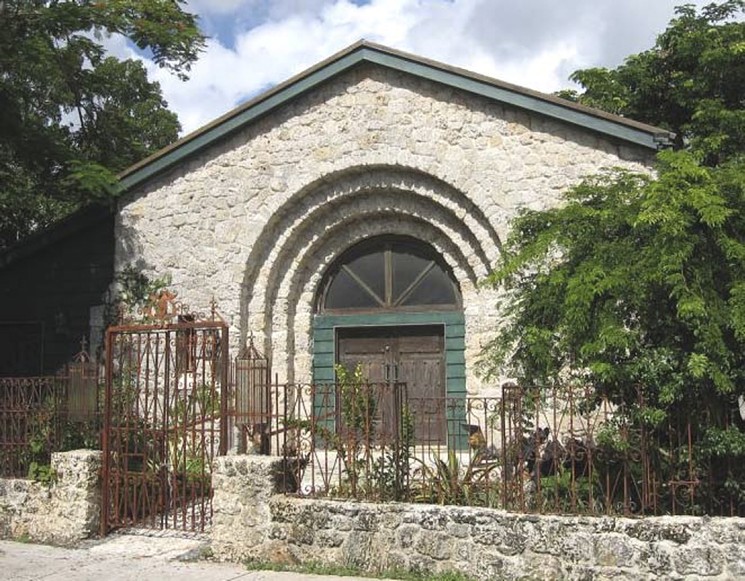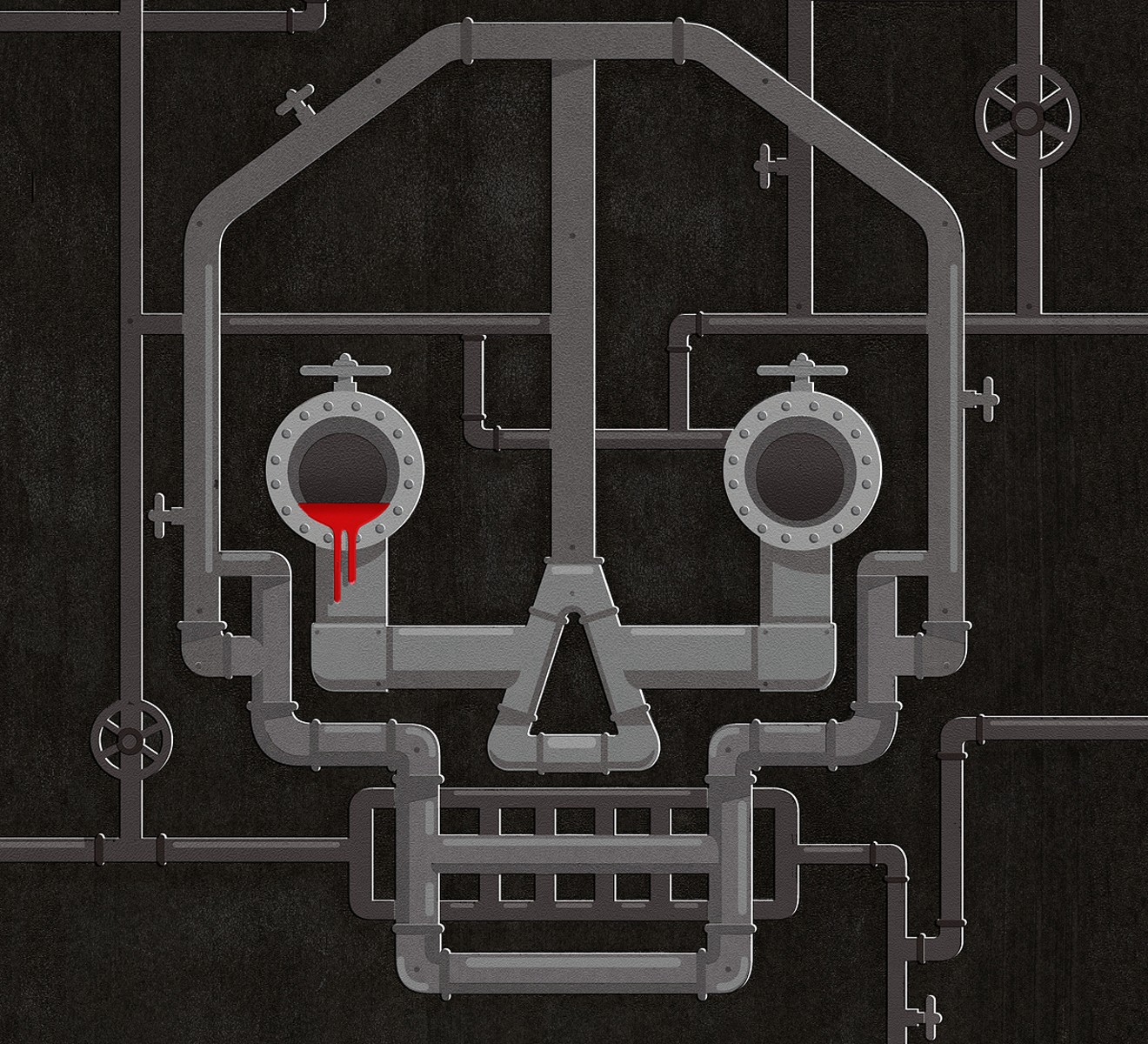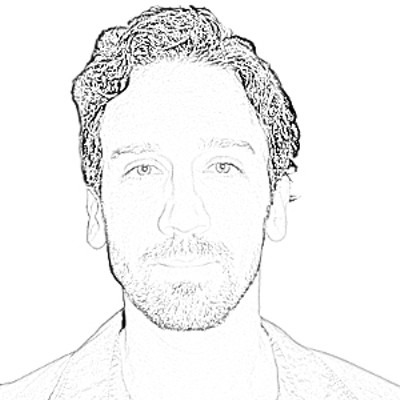Read Part 2 of this story in "Did Murderer Robert Bowman Bury Bodies Beneath the Morningside Pump House?"
Under a canopy of twisted oaks and fluttering palms, an old coral-rock structure stands just off Biscayne Boulevard on the Upper Eastside of Miami. On a recent balmy Sunday, a small crowd gathered in the terraced backyard for brunch. They dined at café tables scattered amid tropical flora. In the middle of the yard, a mini-waterfall cascaded gently from a two-tiered pond carved out of the limestone, gurgling serenely under the trees.
Built in 1923, the grotto-like building at 5808 NE Fourth Ct. originally concealed valuable pumping equipment that pulled fresh water up from the Biscayne Aquifer and piped it to homes in Morningside, a new residential development just to the east.
Today the historically designated pump house is owned by Mark Soyka, one of Miami's preeminent restaurateurs, who created the adjacent 55th Street Station commercial complex, as well as Miami Beach's iconic News Café and the former Van Dyke Café, which ignited development on Lincoln Road. Soyka bought the repurposed pump house three years ago for $1.6 million and last year launched Café Roval, a popular Mediterranean-inspired bistro whose ambiance has been described by customers online as "romantic," "serene," and "spiritual."
But beneath the dining oasis' tropical greenery, babbling water features, and fairy tale-like rock structure lies a decades-old mystery.
In 1982, while being questioned about the rape and murder of a 14-year-old Ohio girl, a Miami businessman named Robert Bowman told police he had killed and "sexually mutilated" another girl and buried her body at the pump house. He owned and lived on the property in the mid-'70s after it had been converted to a private home.
Police couldn't connect Bowman to the Ohio murder at the time but, based on his statements, wanted to search the pump house grounds and its two wells. Several factors converged, however, to prevent that search: The home had a new owner by then, which complicated access and potential excavation work; the detective leading the investigation retired soon after being assigned to the case; and the only newspaper to cover the story shut down shortly after publishing its first article about the incident, ending any followup or publicity. Moreover, in the early '80s, Miami's murder rate was one of the highest in the world due to drug violence, swamping local homicide detectives. And finally, Bowman disappeared into a life of homelessness shortly after he was questioned, not to be seen for 26 years.
In 2008, cold-case investigators finally tracked down Bowman in California and linked him with DNA evidence to the murdered Ohio 14-year-old, whose name was Eileen Adams. Today he's 81 years old and serving a life sentence for that killing.
Now, two former detectives who were involved in Bowman's case say they have always believed he was responsible for additional crimes in Miami.
"It wouldn't surprise me if he did it again," says Bob Lynch, a former North Miami detective who questioned Bowman in 1982. "This isn't something that somebody does just one time. This is one sick guy. He's got a sexual psychosis. I wouldn't be surprised if there were more victims."
Pete Navarre, a Michigan detective who extensively interviewed and investigated Bowman, visited the pump house in 1982. He says there were signs of deviant behavior. "There were remains of several dead animals — dogs and cats who, at best, were tortured and killed."

Navarre was unaware of Bowman's murder claim at the time of his visit and did not conduct a search for human remains. He says he was there "only to cover bases" while investigating the Ohio murder. A body at the pump house would have been a Miami police matter. "I was pretty focused on my own case," he says.
Navarre says police found something even more disturbing at an apartment where Bowman once lived in North Miami: "There was the body of a young black boy found boarded up in a closet, but we could never make the connection or, at least, Miami [police] never made the connection. So there are other opportunities [to investigate]. His frame of mind was such that you can't overlook anything."
At the same time, Navarre cautions that Bowman is a skilled manipulator who enjoys mind games and inventing tales to mislead detectives — in this case, he might have been trying to distract detectives investigating Adams' murder.
"I wouldn't put anything past him," he says. "He's very intelligent."
At Bowman's 2011 trial for the 14-year-old's murder, the state prosecutor told the jury the same thing in his closing statement: "It's important for you to realize at this point that the defendant likes playing mind games with the detectives... He's constantly pulling people back. He wants to engage them because he likes outsmarting people."
Before sentencing, Ohio Judge Gene Zmuda marveled at Bowman's intelligence, telling him: "You are an extremely bright man, perhaps the brightest defendant that has ever appeared before me. I am amazed how bright you are, actually."
That intelligence, which brought Bowman great financial success in Miami, came with a disturbing sexual pathology that many who knew him believe found an outlet somewhere other than with his one known victim.
Bowman's ex-wife, who has never spoken to the media before, tells New Times that she too thinks her ex had other victims. "I believe he did it all across the country," she says. "And I think the cops believed that too, but they can't prove it because they have to go through a whole bunch of rigmarole."
Ohio prison officials didn't approve repeated requests over several years to interview Bowman about his claims and his life in Miami.
Meanwhile, the pump house-turned-popular restaurant has never been searched.

In winter 1966, Bob Bowman walked into a car dealership in Toledo, Ohio, to buy a pickup truck. He was 30 years old, six-foot-two, sharply dressed, and had stylishly long hair. A Korean War vet honed by military service, he showed self-confidence in the way he carried himself.
Margie, the pretty 22-year-old service-desk cashier sitting behind the counter, noticed him when he walked in. There were his looks and style, but there was something else too. Perhaps it was his three-year prison stint for check fraud or his troubled youth bouncing among 19 schools, but she remembered a dash of roguishness.
Bowman introduced himself. He was a smooth talker and said he ran a home-improvement company. He was no laborer, though. He was an entrepreneur — or, as he put it, "a hustler" who always had something going on business-wise. He handled the company's sales and operations. His partner did the installations.
Bob and Margie went on a few dates. He drove her around in a new red Cadillac convertible. Later he would trade it for a diamond-blue 1967 Thunderbird. He said he always drove new cars. Margie was impressed. His mix of charisma, intelligence, and ambition worked its magic and, three months later, they were married. Margie's parents and four siblings didn't attend the wedding. Bob, meanwhile, said he was an only child, and Margie never met his parents. At their nondenominational ceremony, it was just Bob, Margie, and the priest.
Almost nine months to the day after tying the knot, Margie gave birth to a girl. The conception might have been easy, but the delivery was difficult. It was a breech birth. There were a lot of stitches. Margie stayed in the hospital with her baby for a week to recover. Bob, who had courted her so enthusiastically, visited only once.
That neglect grew. And Bob had another surprise waiting for Margie when he drove her home from the hospital. While she was away, he had moved them from the apartment where they had been living into a small house nearby. This didn't seem like a gift. They had moved three times in the past year. Bob, Margie learned, didn't believe in paying rent. He simply kept moving. The small house was his latest landing pad.
Margie spent the following days alone, healing and caring for her newborn in the unfamiliar, sparsely furnished house. Bob was never around. He would leave early and return late, claiming he was out drumming up clients for his home-improvement business.
One evening, around her second week in the new house, Margie was washing baby clothes in the kitchen sink. She couldn't hang them to dry outside — it was the middle of December, and they'd freeze. Instead, she took them to the basement to hang on a clothesline. It was her first time down there.
Inside, strapped to the wall, hanging crucifixion-style, was a young, blue-eyed brunette. She was naked.
tweet this
While pinning up the laundry, she thought she heard rats inside the fruit cellar, an old-fashioned storeroom closed off behind a wooden door. At first, she ignored them. But as the sounds continued, she finally went to check.
She pulled open the wooden door, and her heart stopped. Inside, strapped to the wall, hanging crucifixion-style, was a young, blue-eyed brunette. She was naked. Tape covered her mouth. Her soft whimpering sounded like the squeaking of rats. The girls' eyes met Margie's with a pleading look. Margie screamed.
"Oh, my God, I was horrified. I was scared. I was shaking. I didn't know what to think," Margie would tell a jury 44 years later. Transcripts of that testimony, obtained by New Times, in addition to personal interviews, reveal the horrific details of that night and the events that would follow.
Margie bolted upstairs and ran straight into Bob, who had just returned home. Terrified and confused, she demanded to know what was going on. Bob didn't answer. He began "ranting and raving," screaming at her that she was getting her nose in his business.
Margie gathered her 3-week-old baby in her arms and sat on the living room couch. There was nowhere else to go. It was freezing outside and getting dark. She had an infant, fresh scars from the birth, and no car.
Bob paced furiously in the kitchen. Then, finally, he told Margie that, because of her, he would now have to kill the girl in the basement. If she called the cops or told anyone, he would kill Margie and their baby too. He cranked up the volume on a radio and marched downstairs.
Margie rocked her baby in her arms on the sofa, not knowing what else she could do.

It was dark out when Bob finally emerged from the basement, carrying the girl's body wrapped in a floral sheet and brown braided rug. He told Margie to dress the baby and get in the car. Together, they drove north in his Thunderbird for what felt like forever, until Margie saw a sign saying they were entering neighboring Michigan. On a dark road in a wooded area, Bob pulled over, took the girl's body out of the trunk, and threw it over a fence into the dry brush. Margie gripped her baby tighter and closed her eyes.
The couple drove back to Toledo in silence. Margie walked into the house, fed her daughter, and went into denial, convincing herself the night never really happened.
But it did happen. Eileen Adams was all over the news. A funny, sensitive 14-year-old, she had left school and then disappeared on a recent cold, rainy day after exiting a public bus. And six weeks later, when her frozen body was discovered by a squirrel hunter, the brutal details made local headlines.
Eileen's hands were tied in front of her with a Venetian blind cord. Her legs were bent and her ankles were bound with telephone wire that ran up her back and around her neck, creating a chokehold. Her forehead was bashed in, and a red-stained hammer was found nearby. A large nail had been pounded into the back of her skull. Eileen wasn't naked. Bob had redressed her or, perhaps, made her do it herself before he killed her. Several buttons had been ripped off her white blouse, and semen stained her underwear.
It was the perfect place for a hardworking hustler with a shady past looking for a fresh start.
tweet this
In the days following the discovery, police looked at dozens of suspects, including Eileen's father, the hunter who had found her body, two men who bragged in a bar that they were the killers, and people who called in to claim responsibility. Bob wasn't among them, though, and the investigation went nowhere.
After only eight weeks in the house where he had killed Eileen, Bob sold his share of the home-improvement business to his partner and moved his family to a new area of Toledo. He began selling large illuminated plastic signs for a national company where, by his account, he made $80,000 by the end of his first year. The company president allegedly told Bob that he was making more money than any other salesman, more than the president himself even. Yet for reasons that are unclear, the company severed its relationship with the star salesman.
Bob took his earnings and hit the road. He and his family moved to Columbus, Ohio, where Bob bought into a fish-and-chips restaurant franchise. That venture lasted only four months, until the parent company "went under," Bob would later say. In Las Vegas, he played poker full-time and took his family to Disneyland, about a four-hour drive away. In Phoenix, he came up with the idea of manufacturing women's handbags. But two months into the endeavor, according to Bob, the man to whom he subcontracted the sewing improperly cut all the material and ruined it.
Bob decided to start over. For whatever reason, he wanted to keep moving. This time, he headed south. Way south.

In 1971, when the Bowmans arrived in Miami, the city was shedding its midcentury holiday utopianism and hurtling toward the turbulent 1980s, which would bring mass immigration, race riots, and soaring crime and homicide rates. Rents were cheap, and entrepreneurship was on the rise. It was the perfect place for a hardworking hustler with a shady past looking for a fresh start.
Next to the Florida East Coast Railway train tracks, in what would later be called the Upper Eastside, Bob eventually set up his handbag manufacturing business, House of Moko, in a warehouse at 5962 NE Fourth Ave. He installed about a dozen top-of-the-line sewing machines and hired a half-dozen employees. Margie worked as the company secretary.
Soon Bob was selling faux-leather handbags to department stores such as Saks Fifth Avenue and Jordan Marsh. In court, he would claim he was earning $50,000 a year from the business by the mid-'70s. Several investors joined him in the venture. One of them put in $10,000 and soon was making $100,000 a year.
Bob bought a 1974 Lincoln Continental Mark IV for himself and an Opel sports car for Margie. He sent his daughter to what he called "one of those rich man's private schools" and lived in an "American dream house" at 1120 N. Venetian Dr. on Biscayne Island (the home has since been demolished).
Margie tagged along when Bob took business associates to dinner or out clubbing. A photo from that time shows the smiling, well-dressed pair sitting next to each other at a swanky Miami Beach bar mitzvah for the son of one of Bob's partners. But behind the scenes, Margie was coming undone. She was haunted by the memory of what she'd seen in the basement back in Toledo, she later testified. She drank every day. Mostly, it was Scotch and beer, but she downed whatever she could get her hands on. It blurred the images and numbed her to Bob's occasional physical abuse.
And Bob had mistresses too. During a bench discussion at his 2011 trial, lawyers mentioned a woman whom Bob had tied up and had sex with. He also engaged in "other acts, crimes, or wrongs," including "nearly killing one of his girlfriends." Discussion of those "wrongs" wasn't allowed into evidence at trial, though, and the details are unavailable.
By 1976, Margie had finally had enough. She rented an apartment and moved out with her daughter. For a while, Margie continued working for Bob, and they saw each other regularly. But eventually, she wanted nothing more to do with him and found another job.
Around that time, Bob must have seen the quaint little coral-rock house near the railroad tracks, a couple blocks south of his handbag warehouse. Although built in 1923 as a water-pumping station for the residents of Morningside, it fell into disuse two years later when the neighborhood was annexed by the City of Miami. The city then took over the job of water distribution, and the facility was converted into a private home.
Bob asked Margie to cosign on the $50,000 mortgage. "He couldn't buy it through the bank because he needed my signature because we were still legally married even though we were separated," she explains from her home in Alabama, where New Times found her. "I was glad to go sign the papers so he would leave me alone."
Even if they hadn't been separated, though, Margie says she never would have agreed to live at the pump house. With its semi-Gothic stone archway entrance, heavy pine doors, and dark, timeworn interior, the place gave her the creeps. "That house was spooky," she says.
Inexplicably, Bob removed all of the meat from her freezer, buried it in the backyard, and left.
tweet this
And Bob was growing even spookier. His handbag factory stood next to the studio of the Lumonics, a group of new-age artists who used plastic sculptures, lights, sound, and video projections to create transcendental experiences. Bob began spending time with the artists and consuming an increasing amount of marijuana and LSD. Mel Tanner, the Lumonics cofounder, became Bob's unofficial guru, guiding him through a series of profound spiritual changes.
"Mel Tanner," Bob said at trial, "in addition to being what I considered the best artist, was the best thinking man and most truthful man that I ever encountered... I would spend hours talking with him."
Bob began losing interest in his business and only occasionally went to work, spending more and more time lying inside a Lucite pyramid at the Lumonics studio and a similar one at his home that he had bought for $10,000. "It had a nice place to lay, quadraphonic sound, had a nice colored light to look at, lay down, put on a tape, and lay in there for a couple hours," he would tell the court.
Around the same time, Bob began placing ads in local newspapers for a nonprofit organization called Cornucopia Centers, which hosted meetings at his home, the pump house, to explore concepts such as multisense awakening and cosmic rites.
"He had the Lumonics people in there, and these hippies with their yoga and their pillows and whatever," Margie says. "Crazy shit. Whatever he did, people were going. I don't know exactly what they got out of it."
Tor Pinney, who briefly partnered with Bob to make a new line of handbags just as Bob was letting his business deteriorate, recalls in an email that Bob would sometimes invite his young daughter to sit with him in the pyramid at the Lumonics studio. "I never noted anything strange in their relationship. Bob spent time with her, and she seemed to love him in a normal way. Bob and his ex got along well too, from what I could tell, although I only saw them a handful of times at Lumonics or the shop when she was dropping off or picking up their daughter."
Court records, however, tell a different story. During a bench discussion at Bob's trial, lawyers mentioned that he sexually abused his daughter and gave her LSD while she was still a minor. That information, however, was not presented to the jury.
Shortly after Pinney and Bob parted as business associates, Pinney says Bob became a fixture at a popular waterfront restaurant in Coconut Grove called Captain Dick's. "He assigned himself the job of keeping the restrooms spotlessly clean and sometimes alluded to a spiritual connection with John the Baptist, saying his role was that of 'good, clean John'... I don't remember where he was sleeping while he was 'good, clean John.' Maybe on the restaurant's porch."
By 1978, Bob's transformation was complete. He had decided his mind was being blocked by his pursuit of money and opted to forgo material goods altogether. He defaulted on his mortgage that year and soon abandoned the pump house. Meanwhile, he let the bank take his handbag business, gave away what little money he had left, and withdrew from society: "I had decided that I had all the best of everything this trip here has to offer, and I was no longer interested in driving a Rolls-Royce or Lincoln Continental or wearing a zoot suit," he testified at trial. "I was no longer interested in living in a big house, was no longer interested in stacking paper in the bank... I decided I'll take [my] two dogs and I'll walk. And see where I go. And I'll learn how do you live here from the bottom."
He drifted, crashing with friends or sleeping outdoors. By then, Margie was moving from one apartment to another to try to get away from him. Yet somehow, even though she told no one where she was, he always found her. "I don't know how or why," Margie says.
One day, he turned up at her apartment while she was at work. Their daughter let him in. Inexplicably, Bob removed all of the meat from her freezer, buried it in the backyard, and left.
In October 1978, Margie had reached her limit. Bob showed up at her place yet again, wanting to crash for a while. When she let him in, he hit her. Margie waited up all night. Early the next morning, while Bob was asleep, she and her daughter hurried to a Greyhound bus station with only as much as they could carry and took the long ride back to Toledo.
"That's when I finally decided I can't deal with this anymore," Margie says. "He's got to be put away."
Bob drifts away, detectives track him down, and hints of other murders surface in Part 2: "Did Murderer Robert Bowman Bury Bodies Beneath the Morningside Pump House?"












